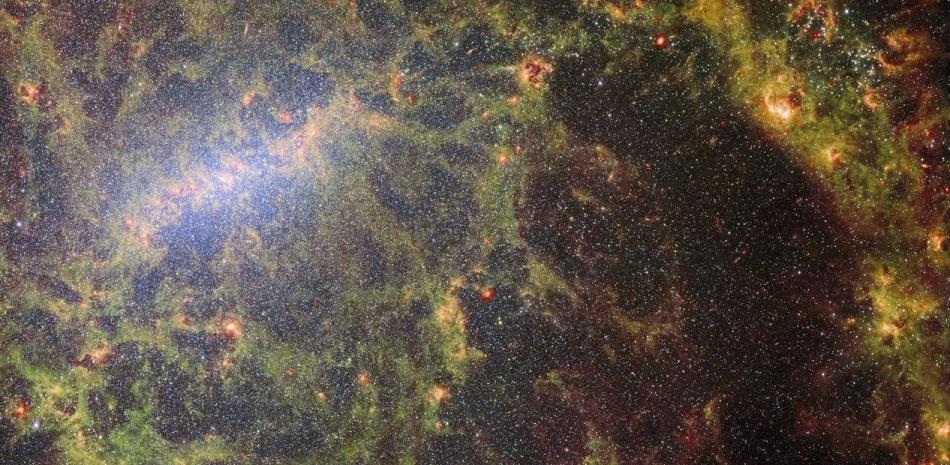An international collaboration with Spanish participation has just published the first catalogue of cosmic distances, with data from millions of distant galaxies and their distances, with unprecedented resolution, field of view and depth.
The catalog was carried out by the PAUS project, in which 14 institutions from six countries participate, using data collected over 200 nights between 2015 and 2019 using the PAUCam camera, from the William Herschel telescope in La Palma, Spain, which was specially designed to measure the distance to galaxies.
All catalogue data are published on Wednesday on the PAUS website, on the CosmoHub portal, and in two articles published in the Monthly Notices of the Royal Astronomical Society, one on distance measurement and the other on calibration of PAUS data.
The mapping covers a vast area of the sky, 50 square degrees, similar to the area of about 250 full moons, and includes data from 1.8 million celestial objects, allowing astronomers to create more accurate maps to understand how the structure of the universe was formed, as well as study dark matter and dark energy.
The accelerating expansion of the universe is attributed to dark energy, which makes up about 70% of the universe, but its nature is still unknown. PAUS maps will shed light on this mystery, providing an accurate and complete description of millions of galaxies located at distances greater than 10 billion light-years from us.
“PAUS Mapping offers a revolutionary approach to cosmic mapping, made possible by the design and development of a new instrument and dedicated mapper to collect and analyse data in ways that have never been done before. It has been a pleasure to collaborate with such a talented and reliable group,” says Enrique Gaztanyaga, Director of PAUS Mapping and Professor at the Institute of Cosmology and Gravitation at the University of Portsmouth.
Camera with 40 filters
This catalog represents a major advance in cosmological research, providing optical redshift measurements that determine distances to galaxies as they appeared billions of years ago.
To obtain these measurements, the PAU camera uses 40 filters of different colours representing narrow bands in the optical spectrum, a technique that images the same field multiple times through multiple colour filters and allows the object’s distance to Earth to be calculated.
While cosmic spectroscopic surveys are equipped with large focal planes that allow simultaneous measurement of the redshift of thousands of pre-selected galaxies, PAUS does not need to pre-select galaxies, but instead uses its 40 filters to measure the redshift of all 30,000 galaxies at once, albeit at lower spectral resolution.
“The precision when measuring galaxy distances depends on the number of filters used, as each filter provides different information about the galaxy. The great advantage of PAUS is that it combines information from 40 different filters, allowing distance measurements with great precision. This level of precision is crucial for studying the structure of the Universe, which in turn requires data from a large number of galaxies,” says David Navarro-Girones, a predoctoral researcher at ICE-CSIC and first author of one of the papers published in MNRAS.
PAUS is a collaboration between Spain, the United Kingdom, the Netherlands, Switzerland, Germany and China.
The scientific exploitation of the PAUS catalogue data has been led by ICE-CSIC, together with the Institute of Physics of Alternative Energies (IFAE) and other institutions in Spain such as the Port d’Informació Cientifica (PIC, a centre managed by IFAE and CIEMAT), the Institute for Space Studies of Catalonia (IEEC), the Institute of Theoretical Physics (IFT-UAM/CSIC) and the Centre for Energy, Environment and Technological Research (CIEMAT).

“Proud web fanatic. Subtly charming twitter geek. Reader. Internet trailblazer. Music buff.”


:quality(85)/cloudfront-us-east-1.images.arcpublishing.com/infobae/ZS6O75ELJFCLPIB6M25CZ7W43Q.com)




More Stories
How to customize notification sounds in WhatsApp
When does fall 2024 start?
WhatsApp: How to Enable Voice Dictation on iPhone and Android